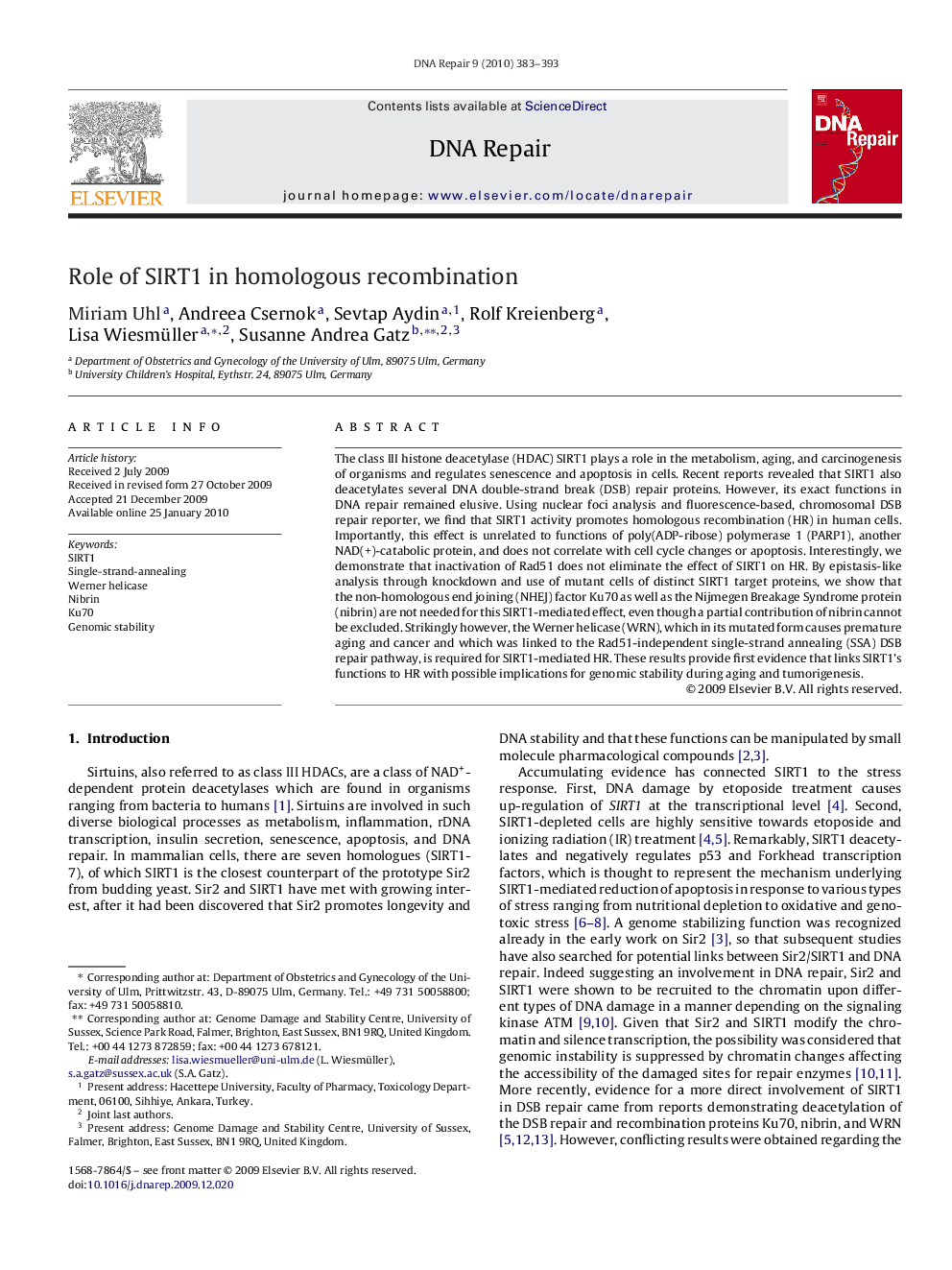| کد مقاله | کد نشریه | سال انتشار | مقاله انگلیسی | نسخه تمام متن |
|---|---|---|---|---|
| 1980488 | 1061861 | 2010 | 11 صفحه PDF | دانلود رایگان |

The class III histone deacetylase (HDAC) SIRT1 plays a role in the metabolism, aging, and carcinogenesis of organisms and regulates senescence and apoptosis in cells. Recent reports revealed that SIRT1 also deacetylates several DNA double-strand break (DSB) repair proteins. However, its exact functions in DNA repair remained elusive. Using nuclear foci analysis and fluorescence-based, chromosomal DSB repair reporter, we find that SIRT1 activity promotes homologous recombination (HR) in human cells. Importantly, this effect is unrelated to functions of poly(ADP-ribose) polymerase 1 (PARP1), another NAD(+)-catabolic protein, and does not correlate with cell cycle changes or apoptosis. Interestingly, we demonstrate that inactivation of Rad51 does not eliminate the effect of SIRT1 on HR. By epistasis-like analysis through knockdown and use of mutant cells of distinct SIRT1 target proteins, we show that the non-homologous end joining (NHEJ) factor Ku70 as well as the Nijmegen Breakage Syndrome protein (nibrin) are not needed for this SIRT1-mediated effect, even though a partial contribution of nibrin cannot be excluded. Strikingly however, the Werner helicase (WRN), which in its mutated form causes premature aging and cancer and which was linked to the Rad51-independent single-strand annealing (SSA) DSB repair pathway, is required for SIRT1-mediated HR. These results provide first evidence that links SIRT1's functions to HR with possible implications for genomic stability during aging and tumorigenesis.
Journal: DNA Repair - Volume 9, Issue 4, 4 April 2010, Pages 383–393